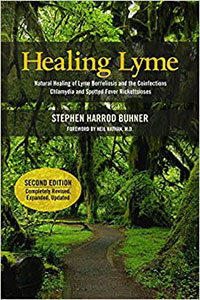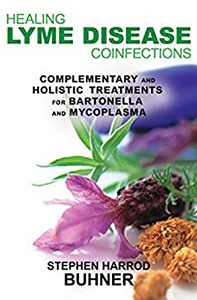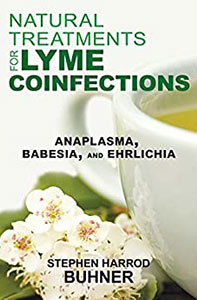Dear Stephen,
What is the most aggressive treatment for bartonella? Symptoms are leg pain, calf pain, dizziness, eye issues, and chest wall pain. Any suggestions?
Stephen’s response:
Research is ongoing, this is the most up to date protocol:
Sida acuta tincture (from
woodlandessence.com or
julie@gaianstudies.org) ¼ tsp 3x day for 30 days
Hawthorn tincture, same
Japanese knotweed, (tincture, same dose (from same sources as Sida acuta, above), or capsules from
greendragonbotanicals.com 2 capsules 3x daily)
ECGC 400mg +- daily
Houttuynia (Yu Xing Cao –
1st Chinese Herbs, powder – use “LYME” code at checkout for 10% off) 1 tbl daily
L-arginine 5000 mg daily in divided doses
Milk Thistle seed, standardized, 1200 mg daily
All for 30 days.
PLEASE NOTE: If you have active herpes, chicken pox, or shingles DO NOT USE L-arginine.
Stephen
-
Stephen Harrod Buhner was an Earth poet and an award-winning author of twenty-four books on nature, indigenous cultures, the environment, and herbal medicine including the acclaimed book Healing Lyme: Natural Healing & Prevention of Lyme Borreliosis & Its Co-infections.
Stephen came from a long line of healers including Leroy Burney, Surgeon General of the United States under Eisenhower and Kennedy, and Elizabeth Lusterheide, a midwife and herbalist who worked in rural Indiana in the early nineteenth century. The greatest influence on his work, however, was his great-grandfather C.G. Harrod who primarily used botanical medicines, also in rural Indiana, when he began his work as a physician in 1911.
Stephen’s work has appeared or been profiled in publications throughout North America and Europe including Common Boundary, Apotheosis, Shaman’s Drum, The New York Times, CNN, and Good Morning America. Stephen lectured yearly throughout the United States on herbal medicine, the sacredness of plants, the intelligence of Nature, and the states of mind necessary for successful habitation of Earth.
He was a tireless advocate for the reincorporation of the exploratory artist, independent scholar, amateur naturalist, and citizen scientist in American society – especially as a counterweight to the influence of corporate science and technology.
View all posts













Fyi – though I found Houttuyunia to be very helpful I had to stop. It increased my resting heart rate initially by about 25% which went back down after two weeks. However when I added another antibiotic into my regimine my heart rate sky rocketed. Talked to docs and they all told me to get off houttuyunia. After that I was able to ramp up on biaxin very fast. Bart symptoms started coming back but when I tried to add the Houttuyunia back in, HR went back up and palpitations increased. FYI!!!
Why just for 30 days? What do we do after that?
How do i take the tinctures? Should I mix them in water or juice or Gatorade?
Bartonella resides in the hematopoietic, or stem cells in the bone marrow that develop to produce all the blood cells. It can invade and attach itself to RBC or erythrocytes and seems to prefer RBCs because of iron. The life of a red blood cell is about 120 days. That’s how long I treat. Read everything by Dr Ed Breitschwerdt.